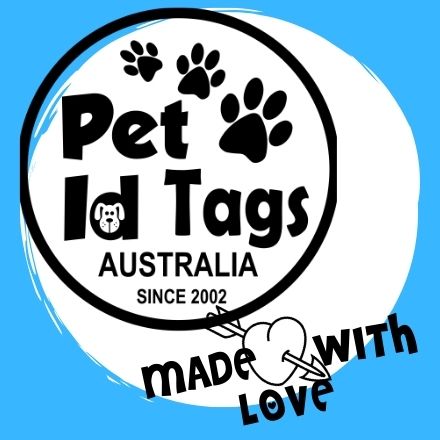Dog tags for pets are more than just a fashion statement. They play a crucial role in pet safety and identification.
If your pet ever gets lost, a dog tag is often the first line of defense. It can provide vital information to help reunite you with your furry friend.
There's a wide variety of dog tags available today. From traditional metal tags to modern GPS-enabled ones, the options are vast.
Choosing the right dog tag involves considering factors like material, size, and the information to include. It's also important to keep the information up-to-date to ensure its effectiveness.
In this comprehensive guide, we'll delve into the world of dog tags for pets. We'll explore their importance, the different types available, and how to choose the right one for your pet.
Join us as we uncover the lifesaving significance of dog tags and how they contribute to keeping our beloved pets safe.
Why Every Pet Needs a Dog Tag
Dog tags serve as an essential identification tool for pets. Losing a pet is a fear many owners know well. In such instances, a dog tag becomes crucial.
It acts as an immediate point of contact for anyone who finds your pet. This small piece of metal or plastic can have a big impact.
Tags that include your pet’s name and your contact details help avoid unnecessary shelter visits. They ensure your pet’s quick return home.
Dog tags offer more than just contact information. They can also state important medical needs, which can be life-saving.
In some places, pet identification is not just helpful but legally required. Failing to comply could mean fines or worse, losing track of your pet.
Moreover, a dog tag is a deterrent to theft. Anyone considering stealing will think twice if they see a tag indicating ownership. Dog tags not only aid in recovering lost pets but also in preventing them from being stolen.
Types of Dog Tags: Materials and Designs
Dog tags for pets come in a variety of materials and styles. The choice of material affects both durability and appearance. Each type offers unique benefits that cater to different needs.
Here’s a quick rundown of popular dog tag materials:
-
Stainless Steel: Durable and rust-resistant.
-
Brass: Offers a classic look with a long lifespan.
-
Aluminum: Lightweight and affordable.
-
Plastic: Comes in vibrant colors, suitable for sensitive-skinned pets.
-
Silicone: Silent option, ideal for noise-sensitive pets.
Designs range from classic to modern, providing endless customization options. Engraving the dog tag is popular for both practicality and style. Some owners prefer double-sided engraving for extra information.
Choosing a design often includes consideration of aesthetics and functionality. Many tags can be personalized with unique icons or symbols. This not only adds flair but quickly conveys important information, like allergies or behavioral traits. Matching dog tags with collars and leashes has become a trend, emphasizing the fashion-forward potential of these essential items.
What to Include on Your Pet's Dog ID Tag
When crafting a dog tag, choosing the right information is crucial. This ensures a swift and safe return if your pet gets lost. Clarity and relevance are key aspects to consider.
Start with the essentials: the pet's name and your contact number. This basic info is vital for anyone who finds your pet. It allows a quick connection between the finder and you.
Depending on space, consider adding an address or city location. This can guide locals to return the pet home. However, if you prefer more privacy, consider simply mentioning the city.
For pets with specific medical needs, include relevant health information. An alert about allergies or medical conditions can be life-saving. This is crucial for ensuring your pet receives proper care if found by someone else.
Here’s a simple list of key details to include:
-
Pet’s name
-
Owner’s contact number
-
Address or city
-
Medical needs or allergies
-
Reward offer (optional)
Adding a note about a reward can incentivize finders to make contact. Ultimately, keep the information concise and clear, focusing on your pet's quick and safe return.
Choosing the Right Dog Tag for Your Pet
Selecting the perfect dog tag involves several considerations. It's not just about aesthetics but also practicality and durability. Start by assessing your pet's size and activity level. Bigger, more active dogs may benefit from sturdy materials that withstand wear.
Consider the tag material; options like stainless steel or brass are durable. They're excellent for active pets who love exploring. For smaller pets, lightweight materials like aluminum or plastic can be a better fit.
Think about the tag's shape and size. Make sure it's comfortable for your pet to wear daily. An oversized tag can be cumbersome, while a too-small tag might not hold all necessary information.
Lastly, evaluate how the tag attaches to the collar. Secure attachments reduce the risk of the tag getting lost. Opt for a reliable clasp that stays in place through all your pet's adventures.
The Advantages of Reflective and GPS Dog Tags
Reflective dog tags offer an extra layer of safety. They enhance visibility during nighttime walks. This feature is crucial for pets who venture out in low light.
On the other hand, GPS dog tags provide advanced tracking solutions. These tags allow you to monitor your pet's whereabouts in real-time, offering peace of mind.
Such technology can be vital in quickly locating a lost pet. It reduces the time your beloved companion spends away from home and in potential danger.
Reflective and GPS dog tags both play unique roles in pet safety. Choosing the right one depends on your pet's lifestyle and your personal preferences.
Ensuring Your Dog ID Tag's Information Stays Up-to-Date
Keeping your pet's dog tag information current is crucial. Update contact details promptly when any change occurs. This ensures quick reunification if your pet gets lost.
Begin by regularly checking the legibility of the engravings. Exposure to elements can fade them over time. Replace tags when they become hard to read.
Consider including multiple phone numbers on the tag. This gives potential finders additional ways to reach you. Remember, more contact options increase the chances of recovery.
Lastly, review your pet's information at least annually. Even small updates, like a new vet or allergies, can be important. This proactive approach keeps your pet safer.
Dog Tags vs. Microchips: A Comprehensive Approach to Pet Safety
Dog tags and microchips each serve unique roles in pet safety. Tags are visible and provide immediate contact info. This makes them the first point of identification if your pet is found.
Microchips offer a permanent backup. They can't be lost or removed easily. However, they require a scanner to access the stored data.
Together, these methods create a robust system for pet recovery. Each has strengths that complement the other. This dual approach maximizes the chances of bringing a lost pet home.
Using both dog tags and microchips ensures reliability. If one fails, the other stands ready. This layered approach keeps your pet safer.
Tips for Securing Dog Tags and Reducing Noise
A secure attachment is vital for preventing tag loss. Use durable rings or clasps that won't easily open. Ensure they are tight enough to avoid snagging.
Noise from jingling tags can be bothersome. Consider silicone tag silencers or rubber covers. These reduce clattering without hindering the tag's visibility.
The Fashion and Functionality of Custom Dog Tags
Custom dog tags combine style with utility. These personalized tags allow pet owners to showcase creativity while providing essential information.
Many opt for unique shapes, colors, and fonts. This adds a personal touch to their pet's identity, transforming tags into both a safety tool and a fashion statement.
Conclusion: The Lifesaving Importance of Dog Tags for Pets
Dog tags for pets are more than simple accessories. They are critical tools for ensuring pet safety and identification. By investing in a quality dog tag, pet owners enhance the chances of reuniting with their pets if they ever go missing.
Choosing the right dog tag means considering the balance between fashion and function. It's essential to keep the tag's information current for maximum effectiveness. Ultimately, dog tags provide peace of mind, knowing that your furry friend's safety is a top priority.




